Gluten-free diets are all the rage these days with many people adhering to them for serious health reasons and others for the belief that it will help them lose weight or avoid unhealthy foods.
But is this really necessary and is a gluten-free diet necessarily a healthy one?
First, let’s define what gluten is so you can know why you’re avoiding it and how it’s potentially harmful.
The Gist on Gluten
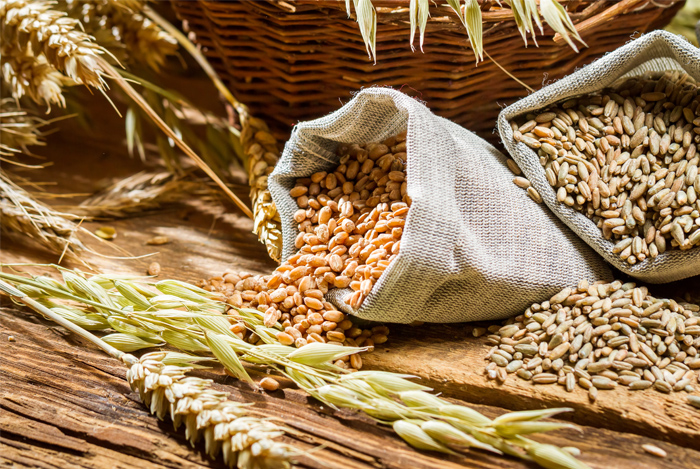
There are many proteins found in nuts, seeds, and whole grains. Gluten is a protein found in whole grains, primarily wheat, barley, rye, and anything made from those foods.
Gluten may also be found in grains that are processed with wheat, barley and rye, such as oats although oats are not high in gluten.
All grains including corn, rice, and oats contain proteins that are similar to gluten, therefore, we can’t isolate gluten alone for being the only problematic protein for many people. Each person’s immune system may react negatively to any protein found in food, including gluten.
How is Gluten Harmful to Health?

Gluten seems to be the most dangerous type of protein to avoid in a variety of grains, however. This is mainly because it’s linked with celiac disease, a type of autoimmune disease where the intake of gluten can actually lead to serious health problems and failure to thrive.
There is also another type of health issue associated with an intolerance to gluten. This is referred to as non-celiac sensitivity.
Non-celiac sensitivity can cause many health issues such as digestive discomfort, autoimmune reactions, and other various problems such as rashes, bloating, constipation, diarrhea, headaches, fatigue, and hives.
Although individuals with non-celiac sensitivity may not be diagnosed as celiac, they may still lack the ability to fully digest the gluten protein and therefore need to avoid gluten for optimal health.
What to Do if You Want to Avoid Gluten

If you believe you may have a gluten intolerance or health issue associated with gluten, it’s important to not just go gluten-free since many other health problems can carry similar symptoms that a gluten intolerance does.
The best way to find out if you have a gluten allergy is or intolerance, or to find out if you have celiac disease, is to be tested and find out for sure. From there you can begin the process of living a gluten-free lifestyle, starting with the foods you eat and changing how you shop for healthy foods at the store.
You can get plenty of nutrients in your diet without eating glutinous grains at all. It’s simply important not to eat a large amount of gluten-free processed foods and stick to whole foods as much as possible.
Best Foods to Eat on a Gluten-Free Diet:
The main nutrients found in foods with gluten (such as wheat, barley, rye, and whole grain cereals and breads) include fiber, potassium, magnesium, zinc, and iron.
Luckily, you can find these nutrients in many other foods that offer even more health benefits than glutinous grains and processed grain products do.
Whole Grains and Psuedograins

One of the first places to start when eating gluten-free foods is gluten-free grains. Whole grains have been shown to be one of the most important foods for longevity and the prevention of heart disease and even cancer, so there’s no need to avoid all of them on a gluten-free diet.
Here are the best gluten-free whole grains and pseudo-grains (seed-like grains) you can try:
Pseudo-grains
Pseudograins are complete sources of protein and higher in iron and magnesium than all whole grains. They cook up just like grains but are actually seeds by nature. Like whole grains, pseduo-grains are also low in fat per serving and can help reduce total cholesterol levels.
- Quinoa
- Millet
- Amaranth
- Chia
- Kañiwa
- Teff
Gluten-Free Whole Grains:
Here are the most commonly eaten sources of gluten-free whole grains. Do your best to look for those certified gluten-free if you have celiac disease just to be safe. These whole grains all offer fiber, zinc, magnesium, potassium, and can help ensure you take in more fiber and antioxidants from low-fat foods.
- Certified gluten-free oats (to avoid gluten contamination)
- Yellow, purple, and blue corn
- Wild rice
- Brown rice
- Black rice
- Red rice
Vegetables
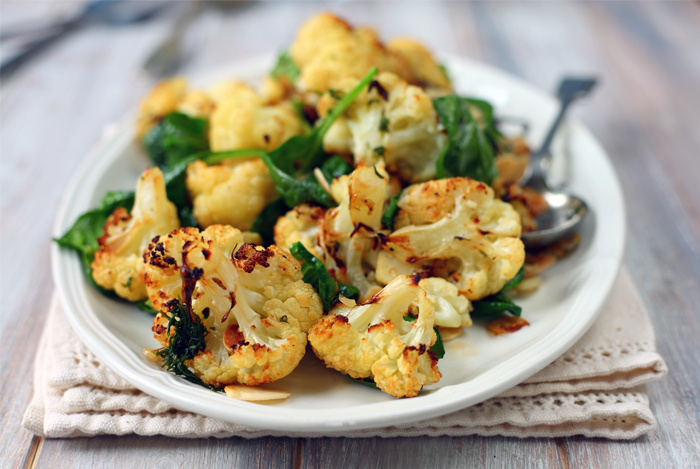
Vegetables should be the cornerstone of any healthy diet, gluten-free or not. They are nature’s best source of fiber, vitamins, minerals and contain no fat per serving. Vegetables can help you lose weight and prevent the onset of obesity and heart disease when consumed in their natural state without oil and excessive levels of sodium.
Below are some of the best vegetables to eat. Eat five to six 1/2-cup servings of non-starchy vegetables and up to three 1-cup servings of starchy veggies per day.
Non-Starchy Vegetables:
- Broccoli
- Cabbage
- Onions
- Garlic
- Cauliflower
- Bok choy
- Asparagus
- Celery
- Zucchini
- Yellow (summer) squash
- Mushrooms
- Turnips
- Carrots
- Parsnips
- Okra
- Turnips
- Eggplant
Starchy Vegetables:
- Sweet potatoes
- Yams
- Gold potatoes
- Red potatoes
- Winter squash (all)
- Pumpkin
- Cassava
Leafy Greens
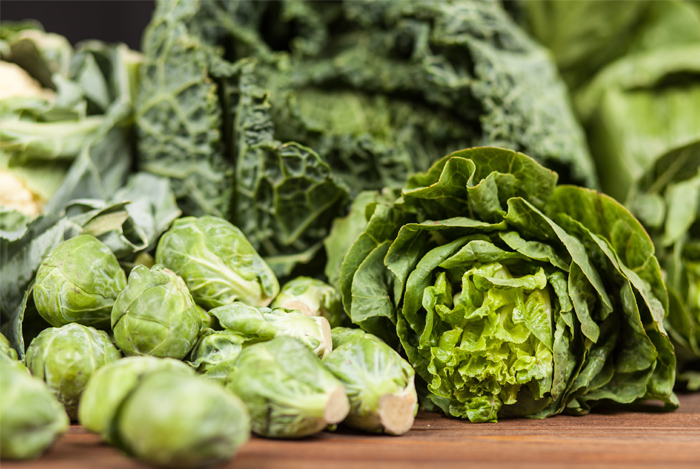
Leafy greens also contain important nutrients for your health. These include vitamins A, C, E, and K along with B vitamins such as folate and Vitamin B6. Many leafy greens also contain large amounts of fiber and they’re excellent sources of water making them hydrating and filling, but low in overall calories.
Eat at least 3 cups of any of these leafy greens each day:
- Spinach
- Kale
- Lettuces (all)
- Collards
- Arugula
- Romaine
- Chard
- Endive
- Parsley
- Cilantro
Fruits

Fruits are wonderful sources of carbohydrates to include in your diet. They can help prevent heart disease just like vegetables and are very easy to digest. Fruits are also alkaline so they can help prevent inflammation and increase alkalinity in the body.
They’re also great sources of Vitamin C and potassium which are both important for your blood pressure levels and immune system. Finally, fruits are some of the best sources of fiber when you’re not consuming grains.
The sugars in fruit are not processed the same way as processed sugar, so be sure you include some fruit in your diet. Just don’t eat more fruit than you do vegetables; 3-5 serving per day is a great number to shoot for if you’re not sure how much fruit you should eat.
Healthy fruits to eat each day:
- Peppers
- Apples
- Bananas
- Oranges
- Pineapple
- Pears
- Berries
- Watermelon
- Cantaloupe
- Tomatoes
- Cucumbers
- Mango
- Cherries
- Guava
- Kiwis
- Figs
- Coconut (also a good source of fats, limit portions)
- Avocado (also a good source of fats, limit portions)
- Dates (high in sugar and low in water per serving, limit portions)
- Raisins (high in sugar and low in water per serving, limit portions)
Nuts and Seeds
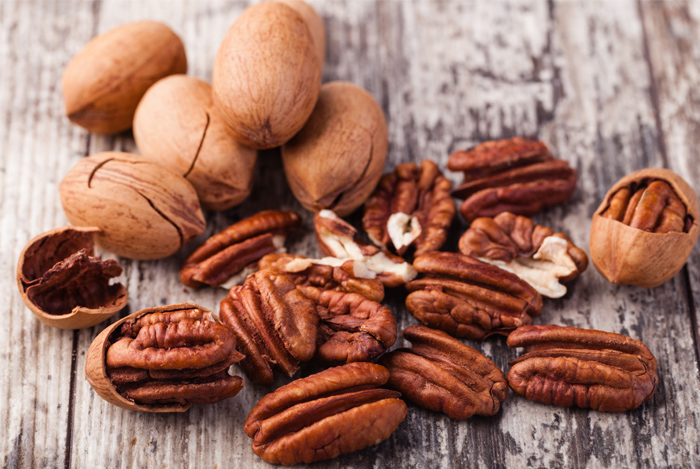
Nuts and seeds are wonderful sources of healthy fats and they have been shown to prevent the onset of heart disease, diabetes, and even memory loss.
Aim to eat 1-2 ounces of nuts and seeds per day; this includes nut butter too.
- Almonds and almond butter
- Cashews and cashew butter
- Peanuts and peanut butter (organic peanut butter is best)
- Walnuts
- Pecans
- Sunflower seeds or sunflower seed butter
- Pumpkin seeds
- Hemp seeds
- Chia seeds
- Flax seeds
- Macadamia nuts
- Pine nuts
- Sesame seeds and tahini (sesame seed butter)
It’s important to be mindful of how many servings of nuts and seeds you consume. If you’re not sure how much to eat, keep in mind that one or two ounces per day is equal to 2 tablespoons or ¼ cup, respectively.
Legumes (Beans, peas, lentils)
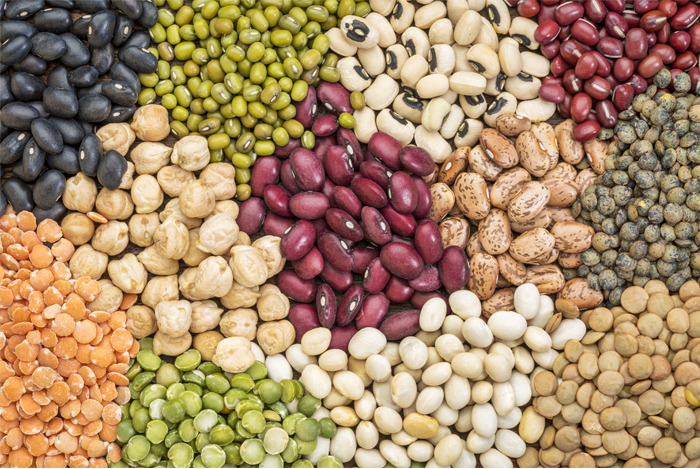
Beans, peas, and lentils are all part of the legume family of plants. Legumes, also called pulses, grow close to the ground, not from trees and flowering plants like nuts and seeds. Peas are grown in pods that grow on taller plants, and beans and lentils grow closer to the ground on vines, not in pods like peas do.
All legumes no matter what their type offer amazing benefits for your health. They’re high in iron, B vitamins, magnesium, zinc, potassium, protein, and they’re low in fat.
Legumes have also been shown to be one of the best foods you can eat to prevent heart disease, diabetes, anemia, depression, and cancer. They’re especially useful for people who can’t consume a lot of grains since they offer more fiber and protein per serving than grains do.
Aim to eat 1-3 servings of legumes per day depending on how much protein you need. Be mindful they are very high in fiber, so take your time to let your body adjust to eating more of them. Here are some of the best legumes you can eat for optimal health.
Beans:
- Garbanzo Beans (also called chickpeas)
- Chana dal beans (split chickpeas)
- Kidney beans
- Black beans
- Azuki beans
- Edamame (young green soybeans)
- Lima beans
- Butter beans
- Cannellini beans
- Navy beans (white beans)
- Pinto beans
- Great northern beans
- Small red beans
All lentils (brown, red, black, French, and green)
Peas:
- Green split peas
- Yellow split peas
- Green sweet peas
- Black-eyed peas
Other Notable Foods to Eat:

These foods are not necessary but can be extremely beneficial for health and are especially high in nutrients per serving. They’re also convenient to use for those looking to take in more nutrients at each meal.
- Non-dairy milk (unsweetened)- good source of calcium
- Cacao powder – bean high in minerals and can be used as a replacement to cocoa powder and chocolate
- Organic coffee – good source of antioxidants
- Cocoa powder – high in antioxidants
- Plant-based protein powder (such as pea protein)
- Hummus (low-fat dip made from chickpeas and tahini)
- Herbs and spices (high in antioxidants, add flavor without salt or sugar)
If you consume animal products, do your best to choose organic options and eat cage-free eggs or wild fish in place of red meat and poultry.
How to Plan Healthy Gluten-Free Meals:
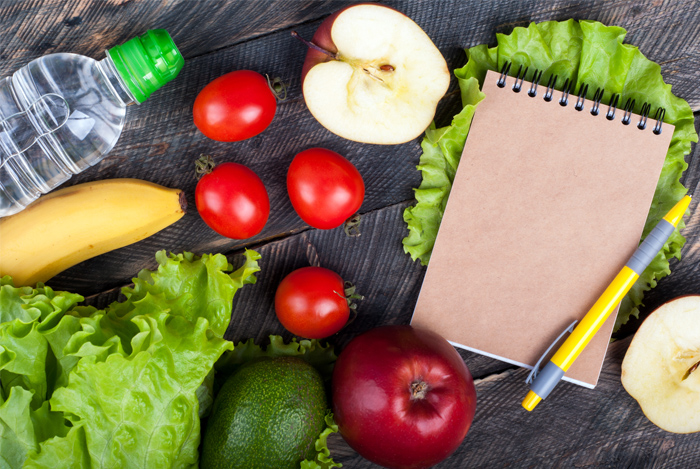
You might be wondering how to put these healthy foods into an easy meal plan. Here are some general guidelines you can use, but feel free to change the servings based on your caloric needs and activity throughout the day.
Breakfast Options:
- Gluten-free whole grain of choice and 1 serving of fruit
- A green smoothie with 1-2 servings of fruit, an ounce of nuts and/or seeds, a scoop of oats, and 3 cups of greens
- Chia pudding with fruit
- Sweet potato with cinnamon, side of fruit and an ounce of almond butter
Lunch Options:
- Garden salad with veggies, avocado, and quinoa (or another pseudo-grain) or lentils (or another legume of choice)
- Veggie Lentil Soup
- Wild rice over a salad with fresh vegetables, a handful of almonds, and an apple
- Brown rice with a legume of choice with 3 cups of veggies
- A green smoothie with fruit, an ounce of nuts and/or seeds, a scoop of oats, and 3 cups of greens
- Sweet potato and lentil stew with your choice vegetables included
- Spinach salad with veggies, a sweet potato, and a side of lentils or quinoa
- Red potatoes with non-starchy vegetables of choice, black beans, and avocado
- Oatmeal with coconut, berries, and almond milk
- Smashed chickpea salad made with chickpeas, onions, celery, almonds, herbs, and served over a bed of greens or on sprouted grain bread
- Split pea soup or cannellini bean soup with veggies and wild rice or black rice
Dinner Options:
Any of the same choices as lunch, add more greens or veggies if you didn’t have them earlier in the day
Snacks (choose 1-2 per day)
- 2 dates with 1 ounce of almonds
- A raw fruit and nut bar
- Piece of fruit with pumpkin seeds
- Veggies and hummus
- Homemade gluten-free cookies using oats, raisins, pumpkin, apples, and peanut or almond butter
These are just examples of healthy gluten-free meals you can eat, and as you can see, it’s very easy to get plenty of nutrients when eating a gluten-free diet.
Just remember to stick to whole foods whenever possible and avoid foods labeled gluten-free that contain high amounts of sugar, additives, and other processed ingredients.
Here are some more tips you can use to help you eat a healthy diet and save time in the kitchen too!
The post Worried About Gluten? Here’s How to Eat a Healthy, Gluten-Free Diet! appeared first on Nutrition Secrets.
http://www.nutritionsecrets.com/worried-about-gluten-heres-how-to-eat-a-healthy-gluten-free-diet/
No comments:
Post a Comment